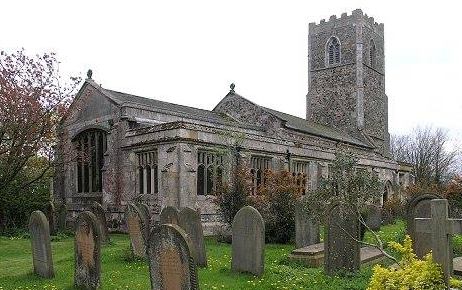Horrified daughter discovers human remains poking out of mother's grave
A horrified daughter has spoken of her trauma after finding human remains poking out of her parents shared grave in a churchyard in Nottinghamshire.
Elaine Mace, 52, found more than ten pieces of skeleton just below the surface of her mother and father's grave when visiting in May.

Her mother, Irene Northage, had died just six months earlier and been interred in the same plot as her Mace's father, Vincent, who was buried there in 1978.
Mace believes the gravedigger at St Mary's Church in Cuckney, Nottinghamshire, dug too far when burying her mother and hit her father's coffin, disturbing his remains.
'We found the bones while tending the grave not long after the interment. I was really upset and was worried that the bones could belong to my dad,' she said according to the MailOnline.
Mace's daugher Jenny, 35, told of how the pair went to the police with the bones because they couldn't work out whether they were human or animal.
'We are quite upset about this and worried that we are going to find something else every time we go down to the grave.
'I think the grave digger has gone too far down while interring my grandmother and hit my grandfather's coffin but we cannot prove it unless we have DNA testing done - which is expensive.'
But Jenny went on to say what upset her most was the way the church had responded and refused to apologise.
'The thing which is getting to us is the way the church has treated us - no one has apologised. My mum is absolutely distraught that these could be grandad's bones,' she said.
But Brian Little, a reader at St Mary's Church, said the chance that the bones were the remains of Ms Mace's father was 'virtually nil'.
He said: 'A professional grave digger would not have dug into the coffin and a heavy oak coffin would have lasted quite some while before it decayed.
'The infill was left sufficiently to allow the grave to sink to its original level which could possibly take more than a year - and should have been left.
'The bones should not have been removed. They should have been left in situ so we could make a record of them and reinter them.
'The graveyard in an ancient church like St Mary's will have been buried in several times - the bones could be 400 or 600 years old.
'If a grave digger finds old bones - as can often happen - he will reinter them in situ.
'I can understand there was some upset and I am not trying to suggest there is any blame around the situation.'
Describing the moment she had found out from the police's forensic tests that the bones were human, Jenny said: 'We were shocked at first but when we found the other parts later on it really upset me to think I have never met my grandad and these bones might be his.
'It was devastating to think somebody so loved could be treated like this. Even if they don't belong to grandad it's still distressing to think there could be someone else's remains in the grave.
'It feels like his memory has been tainted by this.'











